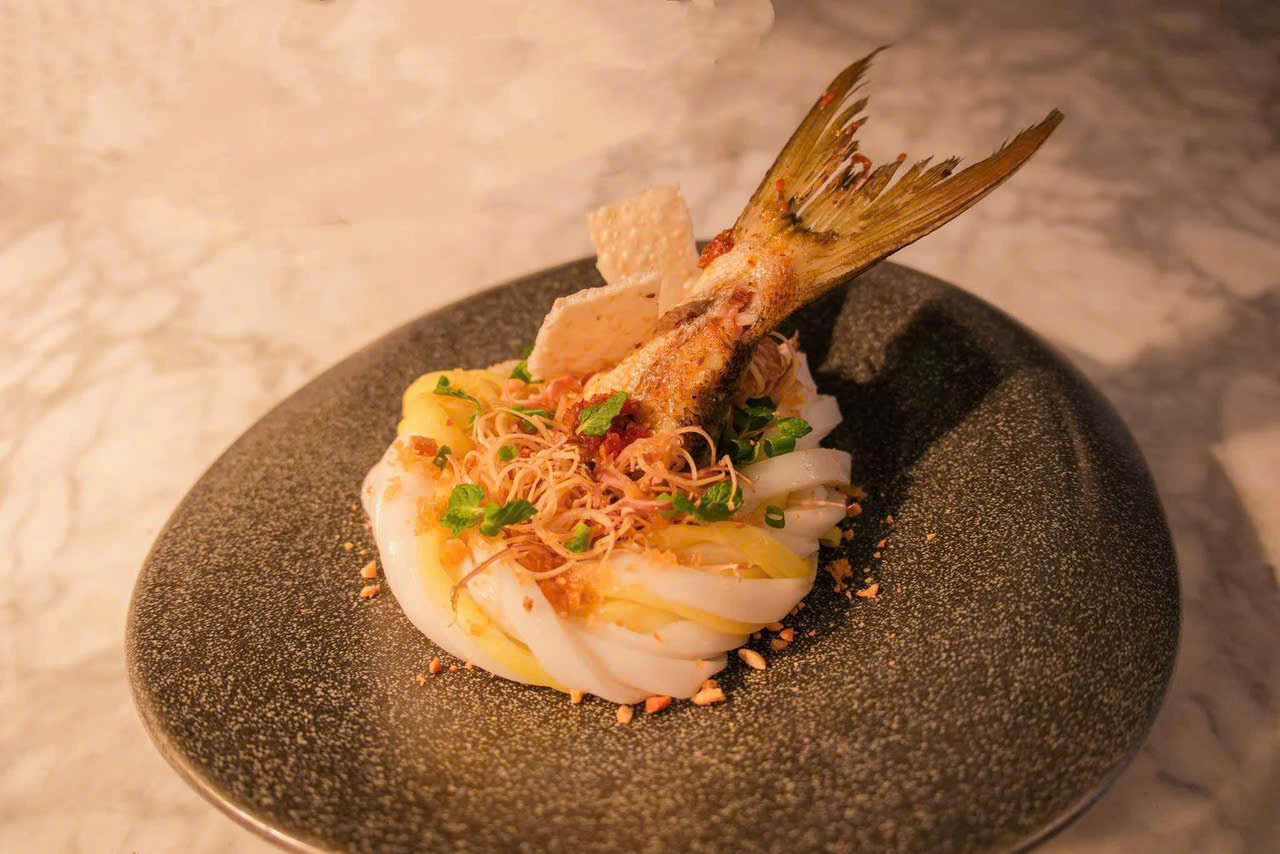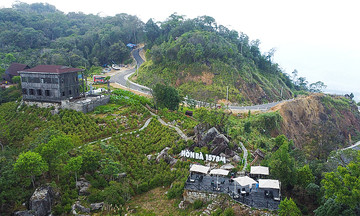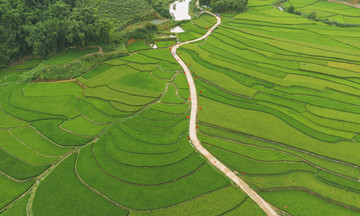According to researcher Ton That Huong, Mi Quang originated around the 16th century, a culinary fusion of Vietnamese and Cham influences. Over time, the dish adapted to local conditions, becoming a culinary symbol of the Quang Nam - Da Nang region, an area known for its harsh weather, arid land, and frequent storms.
 |
Traditionally prepared Mi Quang. Photo: Long Pham |
Traditionally prepared Mi Quang. Photo: Long Pham
Other sources suggest Da Nang - Hoi An was a bustling trading center from the 16th to 18th centuries, a crossroads of Chinese, Japanese, and other cultures. The concept of "mi," originally referring to wheat-based noodles, may have been introduced during this period and adapted by locals to use rice, a staple of the Vietnamese diet.
Culinary artisan Nguyen Quoc Nghi explains that Mi Quang's distinct characteristic lies in its handmade noodles. Finely ground rice is steamed into sheets, then cut into strands. Traditionally, "xuyet" rice was ground with stone mortars to create a smooth flour, resulting in soft yet chewy noodles. The noodles are naturally white or light yellow if turmeric or gardenia seeds are added. Flatter and thicker than other noodles, they retain their pleasant texture when cooked. Peanut oil is added during the blanching process to prevent sticking, enhance shine, and impart a rich flavor.
Unlike pho or bun bo Hue, Mi Quang uses minimal broth. The broth, derived from simmering pre-sauteed meats and spices, is rich and savory. Only a small amount is added to the bowl, just enough to coat the noodles without diluting the flavor.
Mi Quang's toppings vary by family and region, reflecting individual preferences and available ingredients. Traditional versions often feature chicken or shrimp and pork. However, according to chef Long Pham, runner-up in the 2025 "Mi Quang King" competition, there's no fixed recipe. Today, Mi Quang boasts numerous variations, with toppings ranging from fish, eel, chicken, and frog to jellyfish, often incorporating seasonal ingredients.
 |
A modern variation of Mi Quang. Photo: Long Pham |
A modern variation of Mi Quang. Photo: Long Pham
A good bowl of Mi Quang is a feast for both the eyes and the palate. The off-white noodles are complemented by bright red, simmered shrimp, savory pork, and a pristine quail egg. The aroma of shallots fried in peanut oil fills the air. A true Quang Nam experience includes fresh Tra Que herbs, thinly sliced banana blossom, roasted peanuts, crumbled toasted rice crackers, and spicy red chili peppers – a harmonious blend of flavors and textures.
Many villages in Quang Nam maintain their noodle-making traditions. Phu Chiem (Dien Ban ward) is known for its traditional chicken Mi Quang, while Trung Phu (Go Noi commune) specializes in hand-cut noodles made from local rice. Families in Dai Loc and Thang Binh also preserve the art of Mi Quang, passing down their culinary heritage through generations.
More than just a daily meal, Mi Quang holds special significance in the lives of the Quang Nam people. It's a staple at anniversaries and holidays, offered to guests as a gesture of warmth and hospitality. This iconic dish, celebrated both in Vietnam and abroad, embodies generations of culinary wisdom, reflecting the Quang Nam people's deep respect for their heritage.
Tuan Anh












